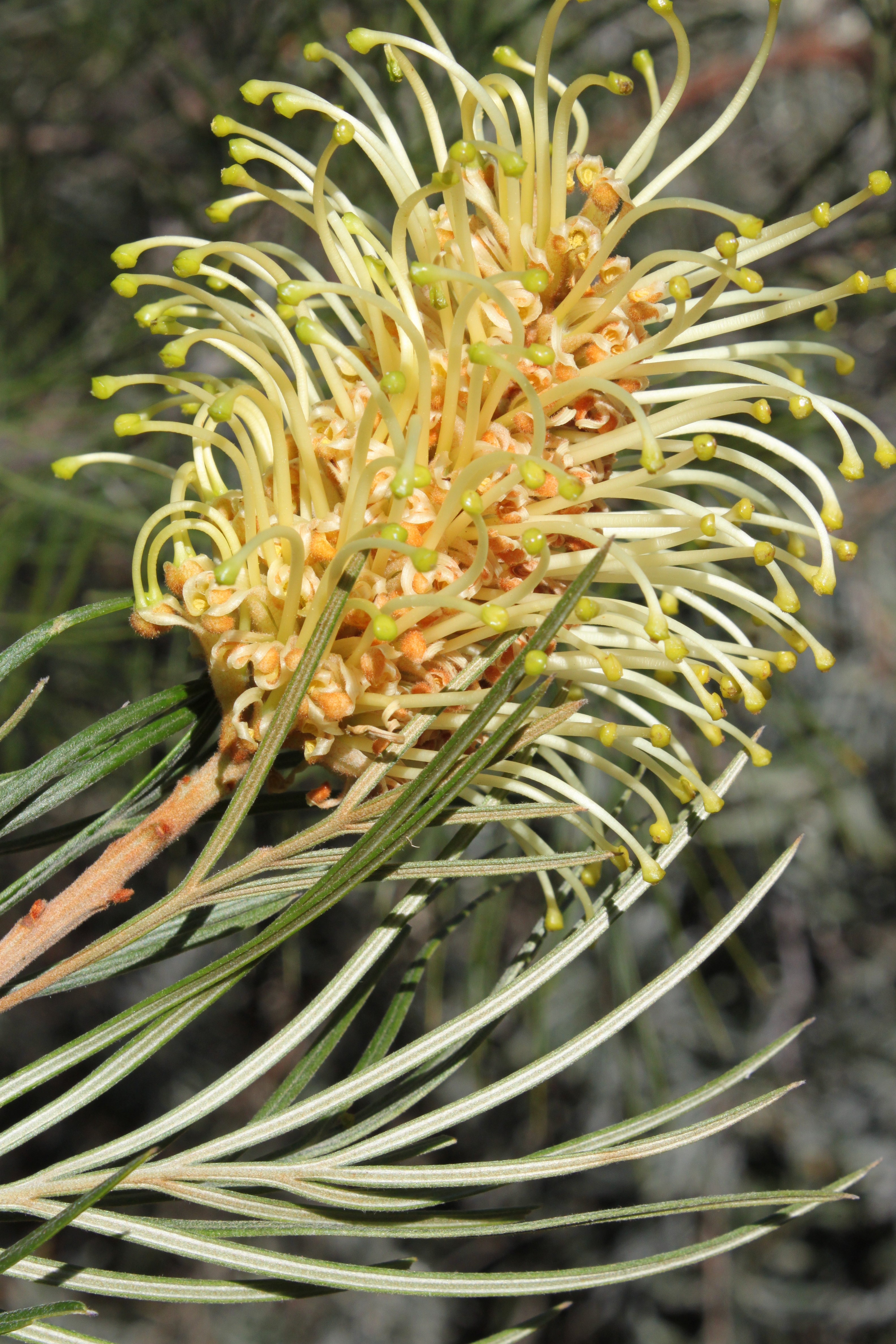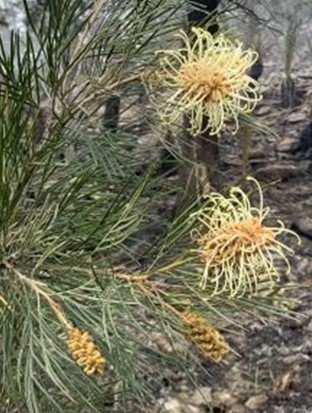Coochin Hills grevillea
Using genetic analysis to help the Coochin Hills grevillea
The Coochin Hills grevillea only grows on 2 peaks in the Glasshouse Mountains. Its small population and narrow distribution make the plant vulnerable to threats that increase its risk of exinction.

Fast facts
Common name: Coochin Hills grevillea
Scientific name: Grevillea hodgei Olde & Marriott
Family: Proteaceae
Status: Critically endangered
Habitat: mid-upper slopes in shrubby woodland
Species overview
The Coochin Hills grevillea is a native shrub that only occurs naturally in the Glass House Mountains, Queensland.
The species grows on Kabi Kabi Country in a very narrow range in the Beerwah area in South East Queensland. The population is restricted to two peaks in the Glasshouse Mountains, no more than 800m apart. One subpopulation is protected within the Glasshouse Mountains National Park, and the other occurs on the adjacent Rupari Hill.
This species was formally described in 1994 by Peter M Olde and Neil R Marriott from specimens that Marriott collected near the Coochin Hills in the Glasshouse Mountains. The plant’s scientific name (Grevillea hodgei) honours Mervyn William Hodge, renowned for his grevillea knowledge and for being the driving force behind the Horticultural Guide to Australian Plants.
Since the 1970s, grevilleas have become a common species to plant in gardens and parks and are commonly used in revegetation projects. Unfortunately, closely related grevillea species from outside South East Queensland have been planted as part of revegetation projects. It is suspected that they are crossbreeding with the Coochin Hills grevillea, which may be contributing to its decline.
Ecology
The Coochin Hills grevillea flowers year-round, with most flowers in March and October. Its creamy yellow flowers attract birds and other wildlife, which are believed to play a crucial role in pollinating the species.
The Coochin Hills grevillea thrives in full-sun or part-shade, in well-drained, sandy or rocky soils in open forests and woodlands. It has adapted to survive in nutrient-poor soils and harsh climatic conditions.
This species requires disturbance (such as fire) to regenerate. However, if fires are too frequent, the seedlings do not reach maturity or produce sufficient seed to replace the adult plants, and the population declines. Infrequent fires may also contribute to the plant’s decline as the population ages without regenerating.

Characteristics
The Coochin Hills grevillea has:
- a height of 1–4m tall
- leaves 6–19cm long and divided into 6–14 lobes that are hairy underneath
- clustered, creamy yellow flowers with dense brown hairs
- fruit that is a woolly-hairy follicle 13–14 mm long.
Threats
- Crossbreeding with other grevillea species not native to the region
- Habitat loss through land clearing for development and infrastructure maintenance
- Inappropriate fire regimes
What’s being done?
- We’re finalising a recovery plan to guide activities that protect and recover the Coochin Hills grevillea.
- Crossbreeding and low genetic diversity may impact the species’ long-term survival, and a genetic assessment of the population is being undertaken to confirm this. This will determine if crossbreeding is occurring and whether there is movement between the separated populations or if each subpopulation is breeding within itself. The assessment will inform future conservation efforts.
- Queensland’s national parks and protected areas play an important role in protecting threatened species and conserving critical species habitat.
- In the Glasshouse Mountains National Park, current management activities include:
- monitoring of habitat condition
- pest management
- managing potential threats e.g. removing suspected hybrid plants and weeds
- planned burns help protect the surrounding urban environment and encourage regeneration of the Coochin Hills grevillea.
- At Rupari Hill, we liaise with infrastructure managers to minimise the impacts to the Coochin Hills grevillea of access trails used to maintain essential infrastructure for the local community.
Who is helping?
· Sunshine Coast Council is working in collaboration with with us to determinehow to protect the subpopulation on private land.
How you can help
- If you live locally or visit the Glasshouse Mountains National Park, you can learn how to identify native plants in the park using the Ranger Field Guide.
- Make a donation to support our work to protect and recover the Coochin Hills Grevillea.
- Find out more about how you can help support threatened species efforts.
More information
- Species profile (Qld, Wildnet)
- Species profile (Australia, SPRAT)
- Ranger Field Guide
- Glasshouse Mountains National Park